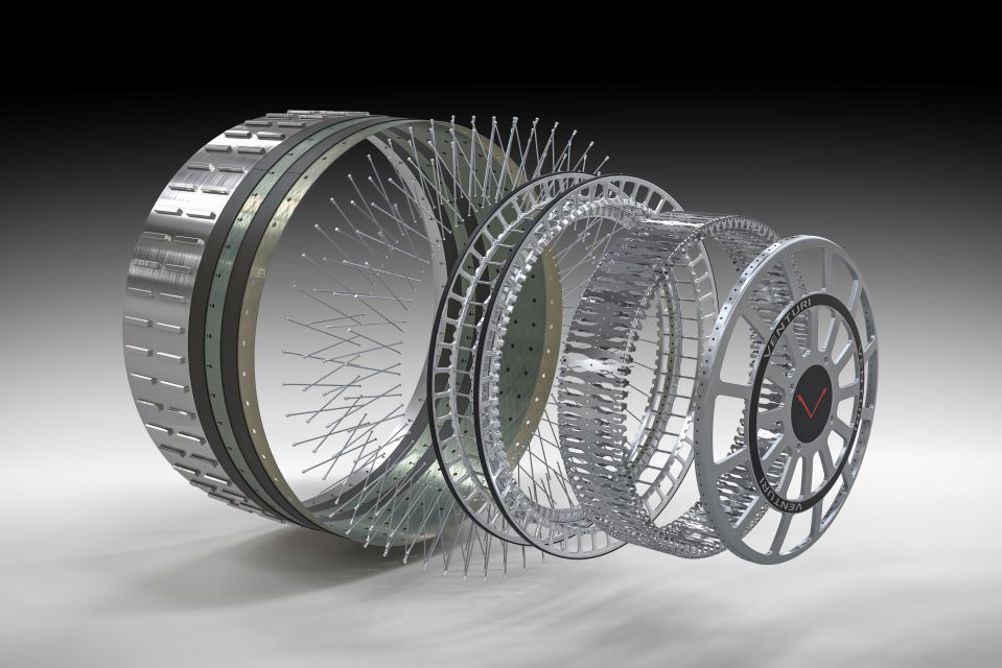Engineers, chemists and physicists at Venturi Lab in Switzerland created the hyper-deformable lunar wheel, which was revealed today (June 19, 2023) at the Paris Air Show.
The wheel will be used on Venturi Astrolab’s FLEX rover, a spacecraft that will be transported to the Moon in 2026 by Space X’s Starship rocket.
From 2026, when the FLEX rover is put into service at the lunar south pole, where extreme temperatures (-90 to -230°C) prevail, the four wheels supporting the two-tonne vehicle (including payload) will warp to absorb ground irregularities as the FLEX travels at 20km/h. The wheels will need to perform over at least 1,000km and resist strong radiation from the south pole.
The company said that 192 cables connect the inner circumference of the wheel to springs arranged along the large rim. The bottom cables expand to allow the flexible tyre tread to hug the surface, while the upper cables stretch beyond their initial position thanks to the springs.

The spokes warp upon contact with the surface and regain their shape as the wheel rolls on. The large rim acts as a stop and marks the limit of deformation of the tread. Cables are arranged in four rows at different angles to optimise the transmission of lateral forces, acceleration, braking and torque.
Related content
The tread is composed of several relatively inextensible stainless steel blades, held in place by a super-elastic material developed by Venturi Lab, that offers high flexibility at particularly low temperatures.
NASA has selected Venturi Astrolab to test and analyse the Venturi wheel at the NASA Glenn Research Center in Cleveland and the NASA Johnson Space Center in Houston. The materials and the wheel are protected by pending patent applications.











Comment: New oil is a lose-lose for the offshore economy
The spill map from the <u>every day</u> link in the report looks to be roughly 400km × 400km @ say 100m average depth = 16,000 cubic <b>kilometres...